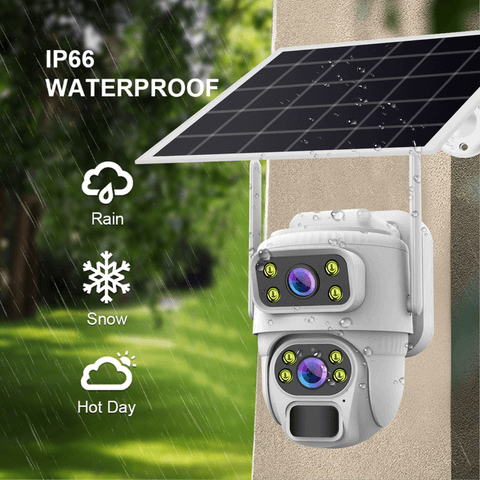Battery-powered cameras have become essential tools for outdoor security, offering flexibility and protection without complex wiring requirements. However, selecting the right outdoor camera involves navigating challenges like harsh weather exposure, battery longevity concerns, and proper installation techniques. Whether you’re securing a remote property, monitoring a backyard, or keeping watch over entrances, the right battery camera can provide peace of mind while withstanding the elements. This guide will help you navigate the key considerations to find a battery camera that delivers reliable outdoor surveillance without constant maintenance.
What battery capacity do you need for reliable outdoor surveillance?
Battery capacity represents the foundation of any wireless outdoor security system. Without sufficient power reserves, even the most advanced camera becomes nothing more than an expensive decoration. Most outdoor environments demand cameras with at least 2000mAh capacity to maintain consistent operation.
For reliable outdoor surveillance, choose cameras with a minimum 2000mAh battery capacity. Expect 4000mAh batteries to provide 2-4 weeks of operation between charges under normal conditions. Power-hungry features like continuous recording, night vision, and motion detection can reduce battery life by 40-60% in outdoor settings.
Battery capacity directly translates to operational reliability in the field. A 2000mAh battery might provide basic functionality in ideal conditions, but outdoor environments introduce significant power challenges. Temperature fluctuations alone can reduce battery efficiency by 20-30% in extreme weather. When evaluating battery specifications, look beyond manufacturer claims and consider real-world scenarios. For instance, a camera advertising 6 months of battery life likely assumes minimal activations and feature usage. Most users report approximately 30-50% of advertised battery performance in practical outdoor applications. Higher-capacity options (6000-10000mAh) command premium prices but deliver substantially improved reliability for high-traffic areas or locations where frequent charging isn’t practical.
| Battery Capacity | Estimated Runtime | Best Use Case |
|---|---|---|
| 2000mAh | 1-2 weeks | Low-traffic, easy access for charging |
| 4000mAh | 2-4 weeks | Moderate usage, standard features |
| 6000-10000mAh | 2-3 months | High-traffic areas, premium features |
Higher battery capacity directly correlates with longer operational time between charges. Premium cameras offering 10000mAh capacity can potentially extend service intervals to 2-3 months, even with advanced features activated. Battery technology advances have reduced charging times by up to 60% in newer models.
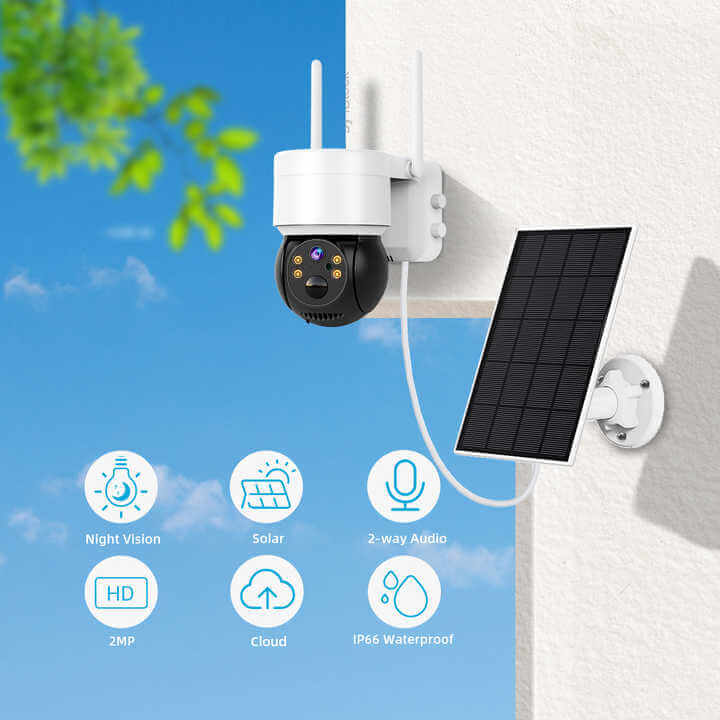
How does camera design impact outdoor performance and portability?
Camera design represents a careful balance between functionality, durability, and ease of use. Outdoor environments introduce unique challenges that indoor cameras rarely face, requiring thoughtful construction to withstand elements while maintaining performance and aesthetic appeal.
Lightweight cameras under 300g offer optimal portability while reducing strain on mounting hardware. Weather-resistant designs with protected lens covers and sealed battery compartments provide essential protection. Compact cameras offer increased placement flexibility but may compromise battery capacity.
Physical design considerations extend far beyond aesthetics when evaluating outdoor cameras. The balance between size and functionality directly impacts both performance and installation options. Heavier cameras exceeding 500g may require specialized mounting hardware and more frequent maintenance checks to ensure they remain securely fastened. Contemporary designs increasingly incorporate purposeful elements like downward-angled casings that minimize rain accumulation on lenses and recessed buttons that prevent accidental activation during maintenance. Color selection also plays a surprisingly important role—lighter-colored cameras typically absorb less heat in direct sunlight, potentially extending battery life and component longevity by reducing operating temperatures during summer months. Many premium manufacturers now offer interchangeable silicone covers that allow customization to match surrounding architecture while providing additional protection.
| Design Feature | Performance Impact | Portability Consideration |
|---|---|---|
| Weight (<300g) | Reduces mounting stress | Excellent for temporary installations |
| Angled housing | Prevents water accumulation | May increase wind resistance |
| Sealed compartments | Improves weather resistance | Adds 15-20% to overall weight |
Streamlined designs with minimal protrusions reduce wind resistance and potential damage during storms. Modular camera systems allow for component replacement without complete system overhauls. Purpose-built outdoor cameras weigh 15-20% more than similar indoor models due to additional weatherproofing components.
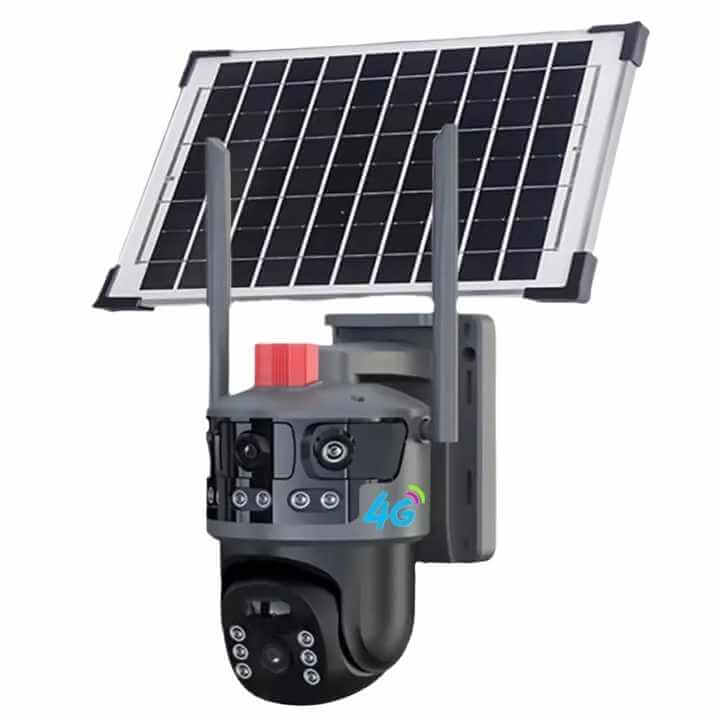
Why do compatibility and charging options matter for outdoor cameras?
Compatibility issues can transform a seemingly perfect camera into a frustrating liability. As smart home ecosystems expand, ensuring your outdoor camera integrates with existing systems becomes increasingly important for both convenience and functionality.
Verify ecosystem compatibility with major platforms like Google Home, Amazon Alexa, and Apple HomeKit before purchase. Quick-charge capabilities reduce vulnerability periods during recharging cycles. USB-C connections offer 3- 5x faster charging compared to older micro-USB standards, minimizing downtime.
Compatibility extends beyond simple connectivity to include feature availability across platforms. A camera that works with Amazon Alexa might offer basic functionality but reserve advanced features for its native app. This fragmentation creates practical limitations in real-world usage. Charging infrastructure represents another critical consideration often overlooked during the initial purchase. Cameras that require proprietary chargers create significant inconvenience during power outages compared to standard USB options. The emerging standard of USB-C connections provides substantial benefits beyond mere convenience—faster charging reduces security gaps during battery swaps, while the more robust connection design withstands repeated outdoor use better than micro-USB alternatives. Forward-thinking manufacturers now include dual-charging options that accommodate both standard USB and proprietary quick-chargers, providing flexibility during different scenarios. Some premium models have begun incorporating wireless charging capabilities, eliminating connection ports that can be vulnerable to moisture intrusion.
| Charging Option | Charge Speed | Weather Resistance |
|---|---|---|
| Micro-USB | Standard (5W) | Poor-Moderate |
| USB-C | Fast (15-25W) | Good |
| Wireless | Moderate (10W) | Excellent |
Platform-agnostic cameras typically cost 15-25% more but provide substantially improved integration options. Quick-charge technologies can restore 50-60% battery capacity within 30 minutes. Cloud storage compatibility varies significantly between platforms, potentially limiting footage retention options.
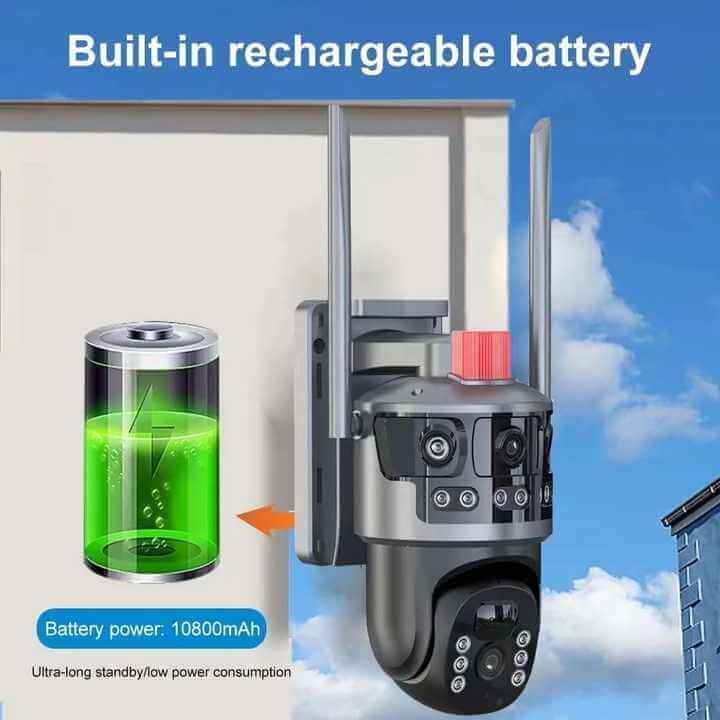
How can your camera withstand extreme outdoor conditions?
Environmental resilience defines the difference between cameras designed for occasional outdoor use and those engineered for continuous exposure to the elements. Without proper weatherproofing, even the most feature-rich camera will fail when confronted with nature’s unpredictability.
Select cameras with a minimum IP65 rating for reliable outdoor performance in most climates. Operating temperature ranges should span at least -4°F to 113°F (-20°C to 45°C) for year-round functionality. Impact resistance ratings of IK08 or higher ensure protection against accidental damage and vandalism attempts.
Weatherproofing ratings provide standardized metrics for evaluating a camera’s environmental resilience. The IP (Ingress Protection) rating consists of two digits—the first indicating protection against solid objects and the second against liquids. For outdoor applications, IP65 represents the minimum acceptable standard, protecting against dust and water jets from any direction. More robust options like IP67 withstand temporary submersion, providing additional security during flooding events. Temperature tolerance proves equally important, particularly in regions experiencing seasonal extremes. Most consumer-grade cameras operate reliably between 14°F and 104°F (-10°C to 40°C), but performance degrades significantly at boundaries. Premium models engineered for extreme conditions incorporate heaters to maintain functionality in sub-zero environments and specialized heat dissipation for desert deployments. Beyond environmental factors, physical durability measured through IK ratings determines resistance to impact and vandalism. Cameras with polycarbonate housings typically achieve IK08 ratings (resistant to 5-joule impacts), while metal-enclosed options can reach IK10 (resistant to 20-joule impacts).
| Protection Rating | Environmental Resistance | Recommended Climate |
|---|---|---|
| IP65 | Dust-tight, water jets | Standard residential |
| IP66 | Dust-tight, powerful jets | Rainy regions |
| IP67 | Dust-tight, temporary immersion | Flood-prone areas |
Advanced weatherproofing extends average camera lifespan by 2-3 years in harsh environments. Temperature-adaptive technologies can maintain 85-90% of optimal performance even at extreme temperature boundaries. Specialized coatings on premium models prevent condensation formation on lenses during rapid temperature changes.
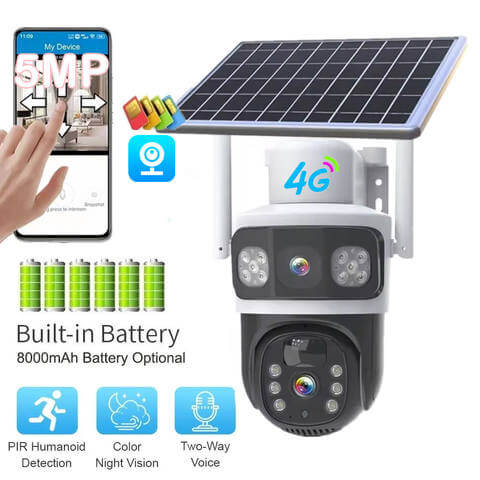
What security features ensure your outdoor camera stays in place?
Camera security encompasses both the footage captured and the physical device itself. Without adequate mounting security and anti-theft features, outdoor cameras become vulnerable to tampering, theft, and repositioning that undermines their primary security function.
Security-focused mounting solutions use tamper-resistant screws requiring specialized tools for removal. Anti-theft features like integrated sirens and tampering notifications provide immediate alerts when cameras detect unauthorized movement. Cloud backup options ensure footage preservation even if the physical device is compromised.
Installation security begins with mounting hardware. Commercial-grade mounts utilize hardened steel components and tamper-resistant designs that prevent simple removal without specialized tools. These systems typically cost 30-50% more than standard mounts but provide substantially improved protection against theft and tampering. Digital security features complement physical protection through immediate notification pathways. Advanced cameras incorporate accelerometers that detect unintended movement and trigger automatic responses—from local sirens to emergency contact notifications. This multi-layered approach ensures a rapid response to tampering attempts. Some manufacturers have introduced innovative security approaches like GPS tracking within premium camera models, enabling location tracking if devices are removed from their installed position. Similarly, encrypted local storage with cloud backup systems ensures that footage remains accessible even if the physical device is compromised or stolen. The most comprehensive security configurations combine physical deterrents, digital safeguards, and redundant storage to create a system resistant to both opportunistic and targeted compromise attempts.
| Security Feature | Effectiveness | Cost Impact |
|---|---|---|
| Tamper-resistant mounts | Reduces theft by 80% | +30-50% |
| Motion detection alerts | 95% tampering detection | Included in most models |
| GPS tracking | Enables recovery if stolen | Premium feature (+$40-80) |
Anti-theft mounting systems reduce camera theft incidents by up to 80% compared to standard installations. Tamper-detection systems can distinguish between environmental movement (wind, rain) and actual tampering attempts with 95% accuracy. Security-focused cameras often incorporate backup batteries that maintain critical functions even if primary power sources are compromised.
How can alternative power sources extend your camera’s outdoor life?
Alternative power sources transform battery-dependent cameras into self-sustaining security systems. As outdoor placement often positions cameras in locations ideal for harvesting renewable energy, supplementary power options can dramatically extend operational capabilities beyond built-in battery limitations.
Compatible solar panels (3-5W minimum) can maintain battery levels indefinitely in locations receiving 4+ hours of daily sunlight. Intelligent power management systems prioritize essential functions during low-battery conditions. Battery backups and hot-swappable designs eliminate security gaps during primary power depletion.
Solar integration represents the most accessible renewable power option for outdoor cameras, with expandable panel systems proportionally increasing charging capability. Entry-level solar accessories typically deliver 2-3W output—sufficient to extend battery life but rarely enough to achieve complete independence from manual charging in high-use scenarios. More substantial 10W panels can maintain full operations even with energy-intensive features activated, though these larger panels require thoughtful placement to avoid creating new security vulnerabilities or aesthetic concerns. Beyond solar, emerging alternatives include small-scale wind generators for exposed locations and even water-flow turbines for properties with continuous running water sources. Power management sophistication varies dramatically between manufacturers, with premium options offering granular control over feature activation based on available power. The most advanced systems incorporate predictive algorithms that analyze usage patterns and weather forecasts to optimize power allocation. Low-battery management represents another critical consideration, as different models handle power depletion differently. Basic cameras simply shut down when batteries reach critical levels, while more sophisticated options gracefully degrade functionality, perhaps reducing video quality or increasing the motion detection threshold to preserve essential security functions with minimal power requirements.
| Power Source | Battery Extension | Best Environment |
|---|---|---|
| 3W Solar Panel | 100-150% | Consistent sunlight |
| 5W Solar Panel | 200-300% | Most residential areas |
| 10W Solar Panel | 300-400% | High-usage cameras |
Integrated solar panels can extend battery life by 200-400% in optimal conditions. Smart power management can increase operational time by 30-50% by dynamically adjusting features based on available power. Alternative power systems typically recover their additional cost through reduced maintenance within 12-18 months of installation.
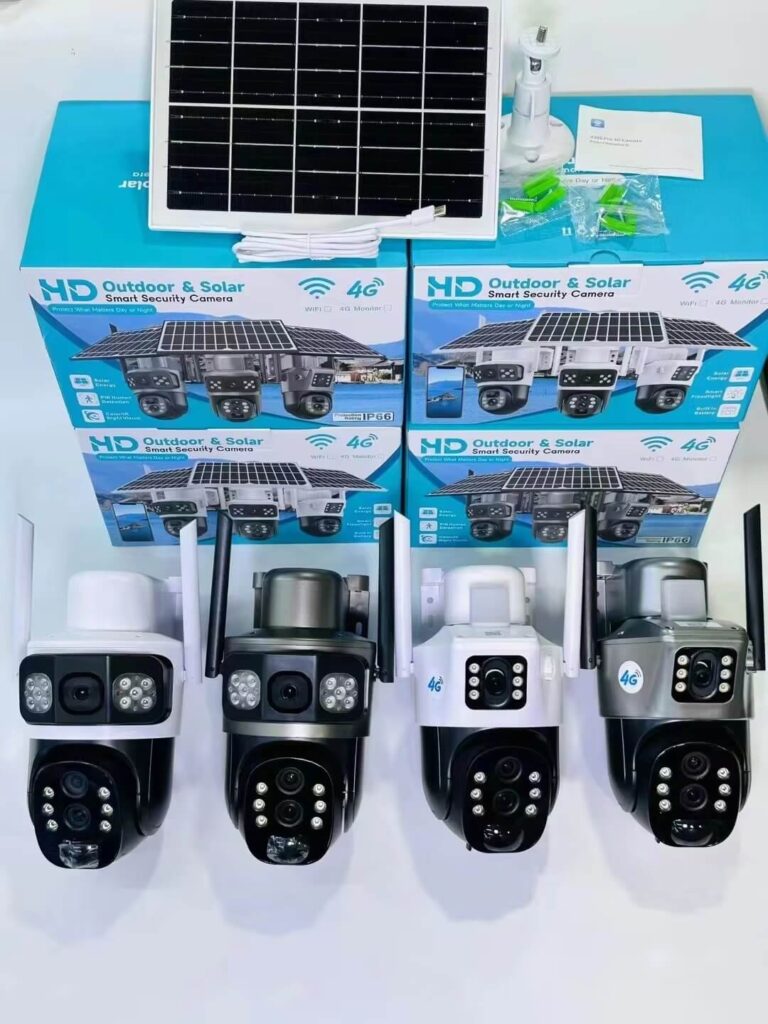
Conclusions
Selecting the ideal battery-powered camera for outdoor use requires balancing multiple factors, including power capacity, physical design, environmental resilience, and security features. Begin by evaluating your specific environment and security needs—consider temperature extremes, mounting locations, and desired features like motion detection or continuous recording. Remember that manufacturer battery life claims typically reflect ideal conditions; for realistic expectations, reduce these estimates by 30-50% for outdoor deployments. Prioritize weatherproofing appropriate for your climate, with IP65 ratings suitable for most environments and IP67 ratings necessary for particularly wet or flood-prone areas. For locations with good sun exposure, solar integration can dramatically reduce maintenance requirements while providing continuous operation. Ultimately, the best outdoor battery camera is one that reliably meets your specific security requirements while minimizing maintenance demands and maximizing durability in your particular environment.

